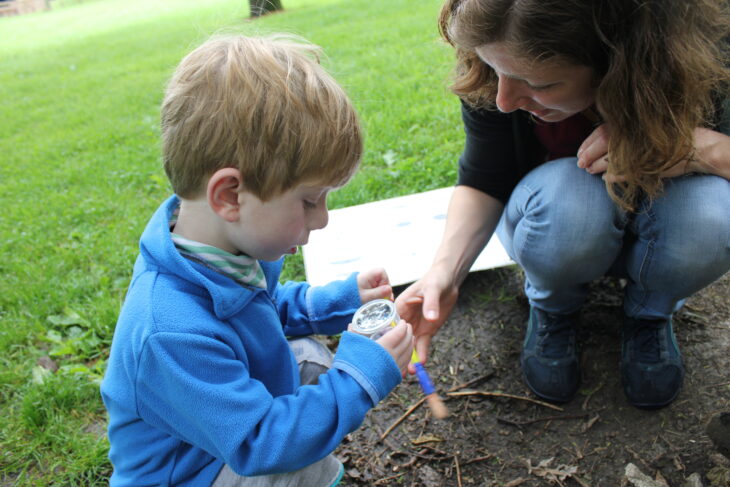Insects and other minibeasts are everywhere yet often overlooked, but they play vital roles in almost every ecosystem. From arachnids (spiders) to insects (beetles and bugs) to molluscs (snails and slugs), there are lots of tiny creatures taking up resident in our gardens, parks, ponds, woodlands and more!
Heading out on a minibeast hunt is a great way to stop and notice the world of tiny creatures around us. Looking at them up close in a bug pot, you’ll see they aren’t so scary!

You can simply search for bugs by looking around trees and under rocks and bark, but if you would like to try a specific scientific technique, you can check out these activities too:
What you will need:
- A bug pot (or a clean used yoghurt pot)
- A spoon or a twig
- An identification chart or book (you can use the downloadable spotter sheets below), or an app on your phone (optional)
- A magnifying glass (optional)
How to go on a minibeast hunt:
- Try searching in these places for your minibeasts: long grass; underneath stones; the underside of leaves; tree bark and dead wood; under the top layer of soil.
- Once you have found a minibeast, use your spoon or twig to gently lift it into the pot.
- It’s important to only lift one minibeast at a time, so that they don’t hurt one another!
- Once it’s in your pot, have a close look at it – if you have a book, chart or phone, see if you can find out what kind of minibeast it is.
- You could draw your minibeast too – but it’s best to be quick, so that it isn’t in the pot for too long.
- When you have finished looking, put your minibeast back as close to where you found it as you can – this is so that it can find its way back home.
- Gently lower the pot so that the minibeast can crawl out by itself.
- Keep going for as long as you like – there are always more minibeasts hiding, you just need to find them!
- You could also add a citizen science element. Seek by iNaturalist is an identification app, great for using with young people. All you need is a smartphone – download the app, take a photo of your insect and it will identify it for you – plus the data gets recorded so it is great for data scientists!
Let us know what you find by using #DiscoverLearnPlay
